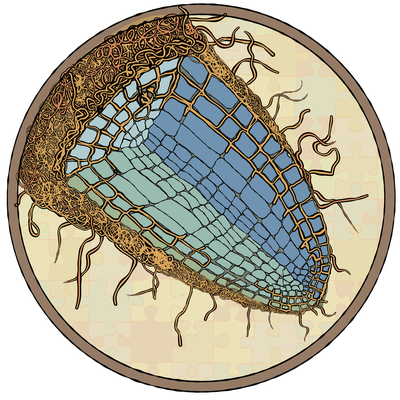Main Content
Subproject 5 - Adaptation and acclimation of the clonal oak's ectomycorrhizal fungi to biotic and abiotic environmental factors

Benjamin Dauphin, Martina Peter, Mika Tarkka, Felix Zimmermann, Erik Teutloff
Symbiotic interactions with holobiont partners that enhance nutrient and water uptake by trees, the ectomycorrhizal fungi, can support host acclimation to changing conditions, with benefits for long-lived trees facing climate change. There are serious gaps in our understanding of the ecological roles of ectomycorrhizal fungi at the level of inter- and intraspecific diversity: how do they mediate root functions and support tree adaptation and acclimation? Furthermore, are ectomycorrhizal fungi adapted to their local environmental conditions? The proposed SP5 project aims to fill this knowledge gap by investigating the contribution of ectomycorrhizal symbiosis to the acclimation of oak holobiont under biotic and abiotic stressors, taking into account the endogenous rhythmic growth. The ectomycorrhizal root tip communities and the species-specific and population-level response of the highly represented ectomycorrhizal fungus Cenococcum geophilum will be analysed in the PhytOakmeter Field-monitoring sites, Tree Canopy Exposition and Ecotron Experiments. These ecological gradients and experiments will represent a wide range of environments and controlled stress situations, and will allow analysis of the modulating influence of the endogenous rhythmic growth on ectomycorrhiza formation and function. A combination of morphotyping, enzyme activity, metabarcoding, gene expression and population genomics analyses supports the project's objectives. By integrating the results obtained and cross- examining them with those of other working groups in the research unit, the project aims to provide valuable information on the role of the ectomycorrhizal symbiosis on oak holobiont acclimation as well as the adaptive capacity of are ectomycorrhizal fungi.





